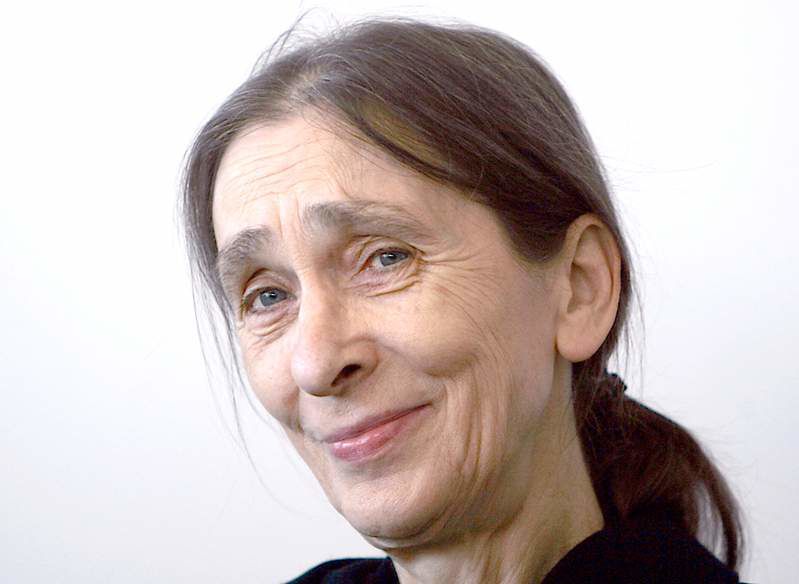Pina Bausch, an influential dance figure, dies at 68
Published 5:00 am Saturday, July 4, 2009

- As the director of the Wuppertal dance theater in Germany, Pina Bausch created what she called “dance theater.”
Pina Bausch, the German choreographer who combined potent drama and dreamlike movement to create a powerful form of dance theater that influenced generations of dancemakers, died Tuesday in Wuppertal, Germany. She was 68.
The cause was cancer, her company, Tanztheater Wuppertal, announced. She received the diagnosis just five days ago, said Ursula Popp, a company spokeswoman. Bausch’s family did not release the exact nature of the illness, Popp said. As recently as June 21, Bausch stood on stage after a performance of a new work, which is untitled, Popp said.
Bausch, whose roots were in prewar German Expressionism, helped change the perception of what could be brought into a dance performance. Her shows featured a deep sense of theatricality; disconnected and sometimes absurd episodes; and elaborate, unusual sets, like carpets of carnations and peat moss or a collapsing wall.
Her base was in Wuppertal, an industrial city near Dusseldorf in northwest Germany, but the company was often at Sadler’s Wells Theater in London, the Theatre de la Ville in Paris and festivals around the world. This summer, the company is to appear at the Spoleto Festival in Italy.
In the United States, Bausch has been a regular at the Brooklyn Academy of Music since 1984. The academy’s executive producer, Joseph Melillo, said he had attended a performance of Bausch’s new work in Wuppertal on June 12. She seemed tired, he said, but no more so than usual after creating a new piece.
“She was Pina, loving and enjoying the company of all of us who had come to be at the premiere, celebrating with the dancers who had worked so hard,” he added.
An innovator
Melillo described Bausch as having created a new dance form — tanztheater — by transforming a pure formal dance background through “her own passions and technique and discipline.”
“The whole scale of Pina Bausch’s tanztheater no one had ever seen before,” he added.
Bausch established a method of creating dances that was widely copied. She would begin rehearsals by asking specific questions of the dancers: about memories, about their daily lives. She would ask them to act out the recollections, and create minidramas from their responses. The dance would grow out of that work, as well as a sense of place derived from foreign residencies.
“I don’t know where the beginning or the end is,” she said in an interview with The New York Times last year. “You have to digest. I don’t know what will come out.”
The ideas and feelings were often harsh, like frustration and alienation, cruelty and pain, but the works were frequently suffused with humor. Bausch was quoted as saying she was “not interested in how people move but in what moves them.”
Dance history
Pina Bausch was born on July 27, 1940, in Solingen, also near Dusseldorf. She started dance study at 14, at the Folkwang School in Essen, which was directed by Kurt Jooss, a major figure in German dance before World War II whose anti-war masterpiece “The Green Table” (1932) is still performed. After graduating in 1958, she received a scholarship to continue her studies in the United States, working with Jose Limon, Antony Tudor and others at the Juilliard School.
She soon joined Tudor’s company at the Metropolitan Opera and also worked with Paul Taylor. In his autobiography, Taylor described her back then as a Tudor favorite, homesick for Germany and “one of the thinnest human beings I’ve ever seen.” As a dancer, he said, she could “streak across the floor sharply, though a bit unevenly, like calipers across paper.”
“She’s also able to move slower than a clogged-up bicycle pump,” Taylor added.
In 1962, Bausch returned to Germany and joined Jooss’ Folkwang Ballet as a soloist. She took up choreography, making her first work, “Fragment,” in 1968. She succeeded Jooss as company director the next year.
In 1973, she took over a company in Wuppertal, which was quickly renamed Tanztheater Wuppertal, and created her first work there, “Fritz,” with music by Wolfgang Hufschmidt. But what really captured the dance world’s attention was a 1975 production of Stravinsky’s “Rite of Spring” on a stage covered with soil. She revived “The Rite of Spring” for the Paris Opera Ballet in 1997.
One of her most important early works, “Cafe Mueller,” was based on memories of growing up in the restaurant and hotel run by her parents.
Bausch is survived by her companion, Ronald Kay, and a son, Salomon Bausch, 27.






